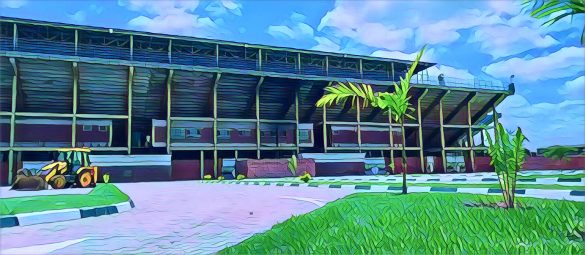Harare Mayor Jacob Mafume has announced the reopening of Rufaro Stadium with a charity match between Dynamos and Caps United, marking the end of its five-year closure. The stadium, a key venue in Zimbabwe’s football history, will officially open its doors again on the weekend of February 10–11, following two years of rehabilitation efforts.
The announcement comes as a relief to football enthusiasts and is a significant step towards addressing Zimbabwe’s stadium crisis. Mayor Mafume, who had previously made unfulfilled promises regarding the stadium’s reopening, expressed confidence that the stadium would be ready for the event, noting the progress made in its refurbishment.
According to a report by New Zimbabwe, Rufaro Stadium’s revival includes upgraded features like access to electricity, modernized dressing rooms, and a renovated pitch. However, further reconstruction will be needed for the stadium to host international matches. The stadium’s capacity has been adjusted from 34,000 to between 25,000 and 30,000 seats.
The area behind the stadium’s VIP section, which was once a muddy parking lot and partially used as a dump site, has been transformed into a well-maintained car park with palm trees and paved bays, operated by City Park. This redevelopment not only enhances the stadium’s aesthetics but also adds functionality to the surrounding space.
Dynamos and Caps United, two of Harare’s football giants, will be the main tenants of Rufaro Stadium. The arrangement aims to minimize the number of tenants to prevent future disrepair, with plans for long-term lease agreements exceeding 10 years. This strategy is part of the broader effort to sustain the stadium’s condition and support local football clubs.
Zimbabwe’s stadium crisis has impacted several Harare-based clubs, including Simba Bhora and ZPC Kariba, which shared the National Sports Stadium for most of last year. The closure of Rufaro Stadium forced teams like Dynamos and Caps United to use alternative venues across the country. The reopening of Rufaro Stadium is thus a significant development for local football, providing a much-needed home ground for these teams.
The reestablishment of Rufaro Stadium as a functional sports venue is a positive step in reviving Zimbabwe’s football infrastructure. It is expected to enhance the local sports environment, offering players and fans alike a renewed sense of pride and a boost to the local football scene.


